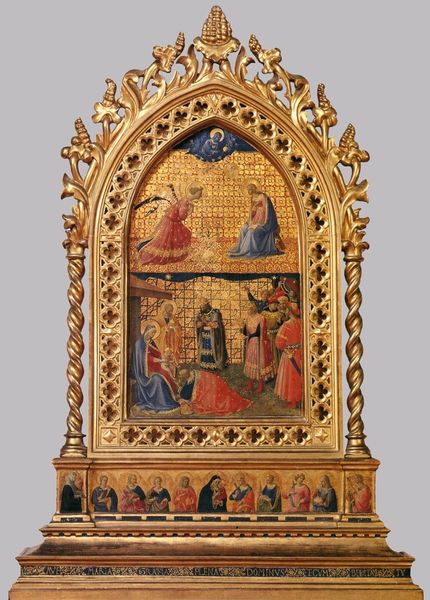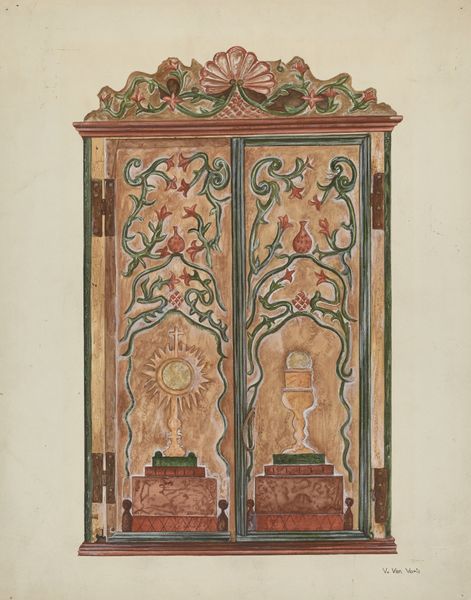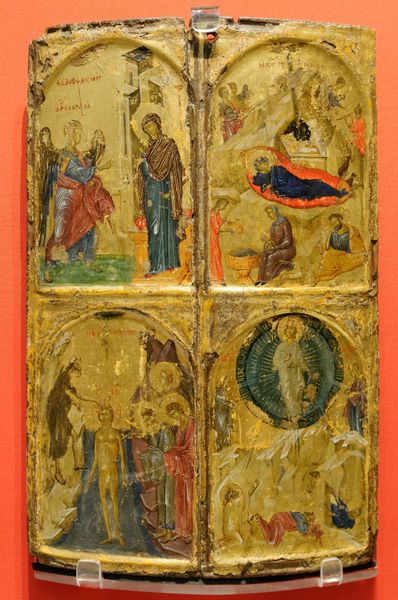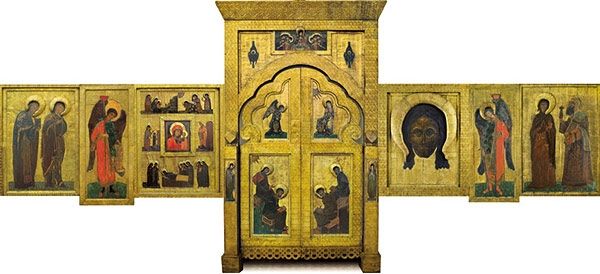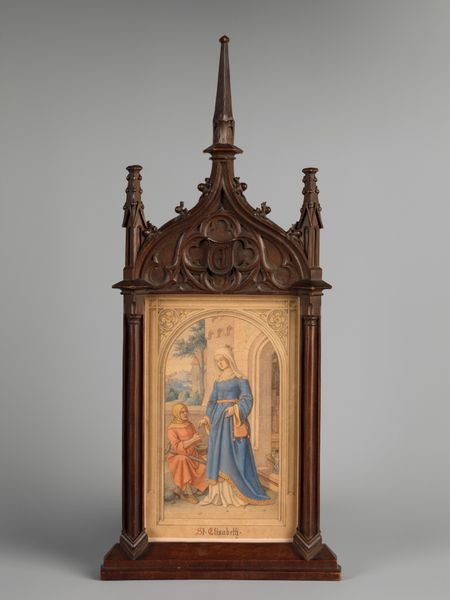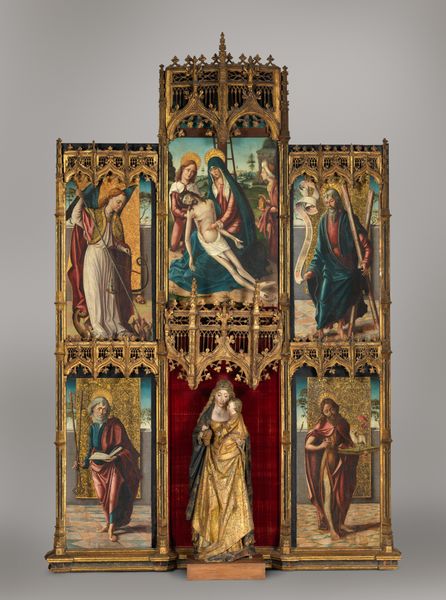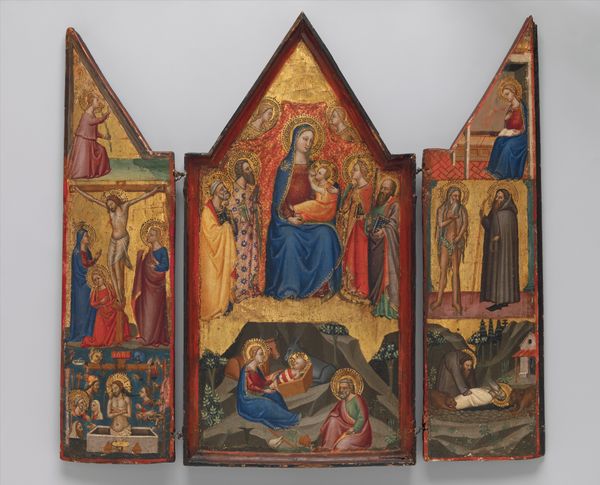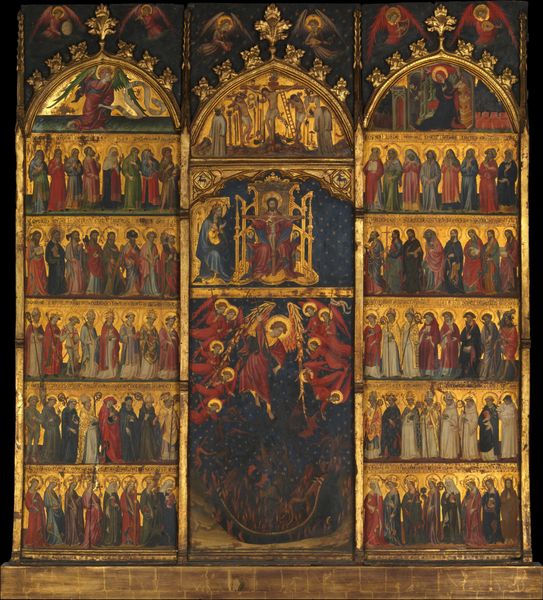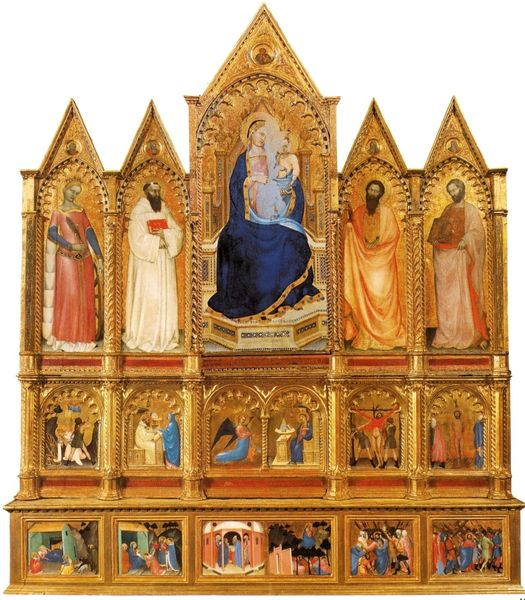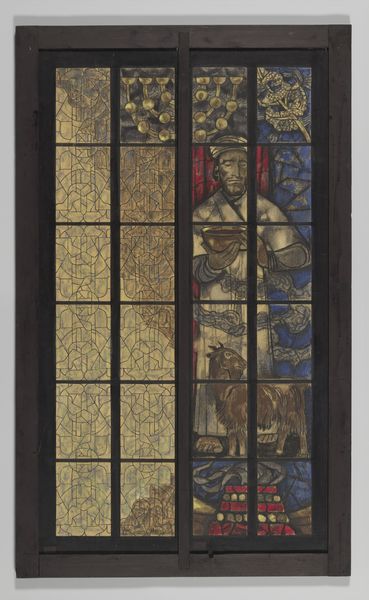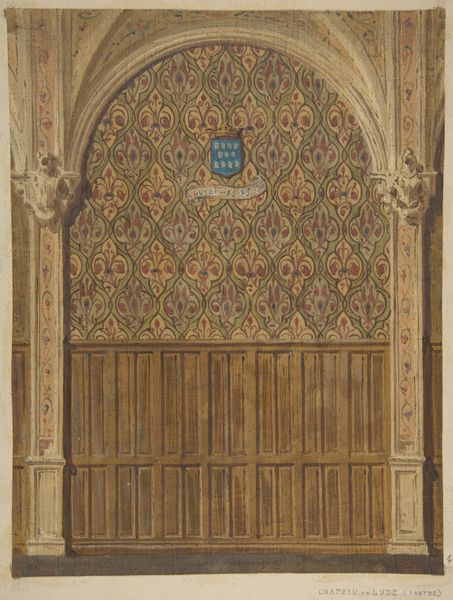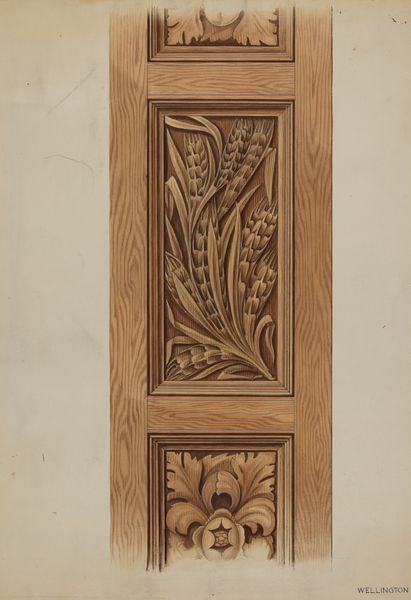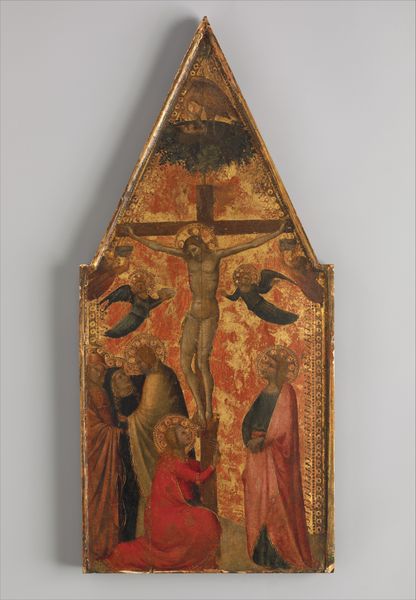
Music cabinet and piano with a relic of St Cecilia c. 1858 - 1859
0:00
0:00
tempera, painting, wood
#
byzantine-art
#
medieval
#
narrative-art
#
tempera
#
painting
#
figuration
#
wood
Dimensions: height 205.5 cm, width 103 cm, depth 56.5 cm
Copyright: Rijks Museum: Open Domain
Editor: Here we have Pierre Cuypers’ “Music Cabinet and Piano with a Relic of St. Cecilia,” dating from around 1858. It's tempera on wood and incredibly ornate. What strikes me most is the blend of decorative and figurative elements, which create this devotional and yet very functional object. How do you interpret this work? Curator: This cabinet speaks volumes about the 19th-century's fascination with the medieval, a period often romanticized as deeply spiritual and ordered. Cuypers, a key figure in the Gothic Revival, doesn’t just mimic medieval forms; he uses them to communicate specific ideals about art, religion, and society. What stories are present, and what do they mean? Editor: Well, I see the Annunciation, plus two female saints...I am not so familiar with the Catholic imagery. I suppose those women are saints given the halo, what can you tell me? Curator: Exactly. Think about St. Cecilia, patron saint of music – her presence elevates the status of music itself, associating it with divine grace and virtue. Cuypers is advocating for art and music’s moral role in society, a deliberate response to the growing secularization and industrialization of the time. It’s not merely decoration, but a manifesto! Consider this: what does it mean to enshrine music and art within a domestic object during this era? Editor: I see now, there's a yearning for art to have meaning beyond just aesthetics... to shape moral values. So it is an attempt to recapture what he perceives to be a more devout era? Curator: Precisely! And what does this idealization of the past say about Cuypers' present, about his anxieties and hopes for the future? It's not simply about style, but about a pointed engagement with modernity. Editor: This makes me see how design and craft of the time were trying to influence culture by linking art and ethics, by embodying the narratives in an artful form. Curator: Absolutely, the stories it tells shape how you engage with the everyday! I guess that this cabinet has many things to say!
Comments
rijksmuseum about 2 years ago
⋮
Pierre Cuypers, the Rijksmuseum architect, designed these pieces of furniture as engagement and wedding presents for his second wife. The Gothic Revival style and the reliquary on the piano express their deep-rooted Catholicism. The images on the piano case – the Annunciation and scenes from the life of St Cecilia, patron saint of music – allude to the difficult choice of Cuypers’ wife between marriage and a musical career.
Join the conversation
Join millions of artists and users on Artera today and experience the ultimate creative platform.
